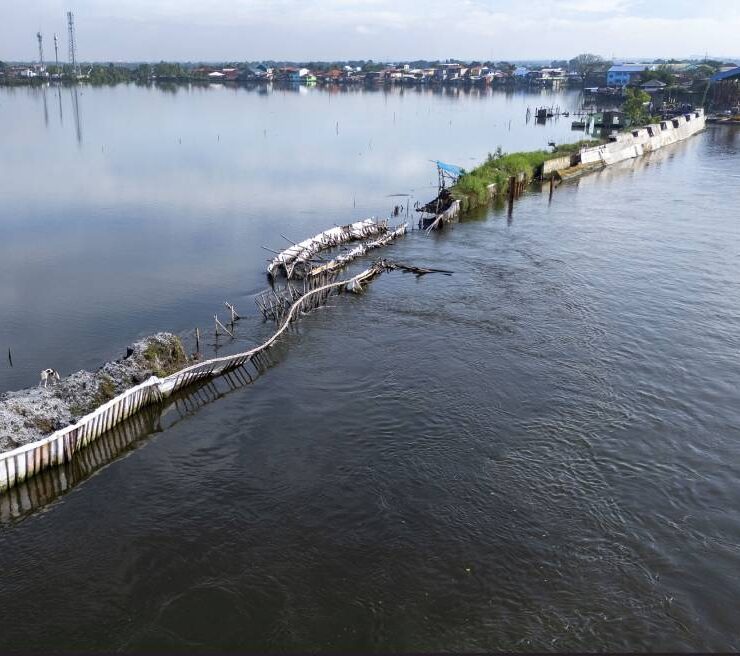Unshackling the invisible chains that continue to enslave our farmers

In the critical area of food supply chain, the farmers and the traders are the acknowledged key players. One is the producer of farm products and the other is the distribution channel. The linkage between the two is more prevalent in basic commodities, such as rice, corn and coconut.
To the cursory observers, the relationship seems symbiotic and mutually beneficial. Or is it?
Scanning the vast expanse of the Philippine countryside, the huge disparity in the farmers and the traders’ lifestyles is quite noticeable. For instance, while the farmers reside in shanties or modest homes with spartan amenities in the villages’ peripheries, the traders live in mansions with luxurious comforts in the town’s prime locations.
From all indications, the relationship is anything but equitable.
Let’s go deeper and examine how the interaction between those two main players in agriculture works.
The traders’ entry point in their engagement with the farmers is not as buyers of farm products, but rather as creditors. The traders are the most dominant loan providers to the farmers. But although they earn substantial profits from those loans (charging an interest rate of 20 percent per month or even higher), their credit operation is more of a scheme to entice the farmers to sell their produce to them at their dictated price. The said price is, of course, lower than what the farmers can get from other buyers. This enables the traders to increase their margins and earn even bigger profits.
Subsistent living
The setup has been going on for generations. As a result, the farmers’ incomes are inconsequential and merely for subsistence. There is hardly anything left for such farming necessities as adequate fertilizers, good seeds, new technology and machinery. No wonder, the prices of our farm products, like rice, are not competitive with those of our Asian neighbors.
Focusing further on the rice farmers’ predicament, their situation is expected to worsen once the tariff on imported rice is reduced. The rationale behind that action is understandable—to make rice cheaper for the consuming public and force the farmers to compete and produce competitively priced rice.
But how can the farmers improve their productivity when they are drowning in a sea of debts from the traders, and the only lifeline they get from the government are mere palliatives. What the tariff reduction would do is further burden the farmers until they finally snap and give up. Then what? Be forever dependent on imported agricultural goods?
The conventional wisdom on why the traders are the farmers’ lenders of first choice is because they don’t require voluminous documents to fill out in applying for a loan, and the loan is readily available. That is true to some extent, but the traders’ primary enticement is they provide not only production loans but also consumption and providential loans. Thus, if the farmers need cash to buy cellular phones for their kids, to cover the funeral expenses of a family member who died, or to raise funds for the fiesta celebration or the wedding of a daughter, etc., they go to the traders. Apparently, the traders’ strategy is to bury the farmers in debt so they could control and manipulate the buying price of the farmers’ produce.
Getting a loan from the traders is like mortgaging one’s soul to the devil. Nonetheless, the farmers continue to be willing victims because they see no other viable alternatives.
Structural prerequisites
Notwithstanding their adversarial positions on many issues, there is unanimity between the farmers’ supporters and the technocrats that agricultural reforms and structural changes need to be introduced to improve the farmers’ productivity. However, they differ on the kind of approach. The technocrats talk of farm clustering, introduction of professional managers to run the cluster, use of modern machineries and technology, etc. Well and good. But these proposals are mere slogans, unless they are accompanied by how all of these will be operationalized and funded. In the meantime, the farmers are struggling just trying to keep their heads above water.
When the Rice Tariffication Law was discussed in a symposium I attended in 2018, a well-known economist strongly supported its enactment. However, he also noted the urgent necessity of providing assistance to the farmers to improve their productivity. When asked how come he failed to help put in place those reforms and programs when he was still holding a high position in government, he sheepishly answered that there were strong lobby groups and individuals opposing them. One wonders: if he couldn’t do it while he was inside the government, wouldn’t it be harder for him to succeed now that he is outside of it?
What our farmers need
Isn’t it only logical that before we open our market for agricultural products to competition, we must first strengthen our farmers’ capabilities? Aren’t agricultural reforms and structural changes prerequisites for such a move? Otherwise, our farmers will be clobbered by the competition. And that is exactly what is happening now.
To give the local farmers a fighting chance in their quest for a decent standard of living, we must do the following:
- Set up a lending program that is attuned to the needs and requirements of the farmers. We must wean the farmers off their dependence on the traders. Only the government, with its vast resources, can do this.
- Get the farmers involved and made a part of the lucrative agricultural trading business. This is where the money is in agriculture. While a farmer’s harvest is subject to the vagaries of the weather, trading those produce is not.
- Come up with a consensus on what agricultural reforms and programs to prioritize for implementation. The experts have varying opinions on this issue, which should be resolved. Once all is settled, then immediate implementation should commence.
Our agricultural sector’s performance has been dismal for so long. The immediate victims are the farmers and not far behind the consumers. For an agricultural-based economy like ours, the prevailing situation is inexcusable. The time to get our act together is long overdue. INQ
This article reflects the personal opinion of the author and not the official stand of the Management Association of the Philippines or MAP. The author is member of the MAP Agribusiness Committee. He is also the adviser of the Philippine Disaster Resilience Foundation and is the former president of UCPB-CIIF Finance and Development Corp. and UCPB-CIIF Foundation.
Feedback at map@map.org.ph and edgardo.amistad@yahoo.com.




















